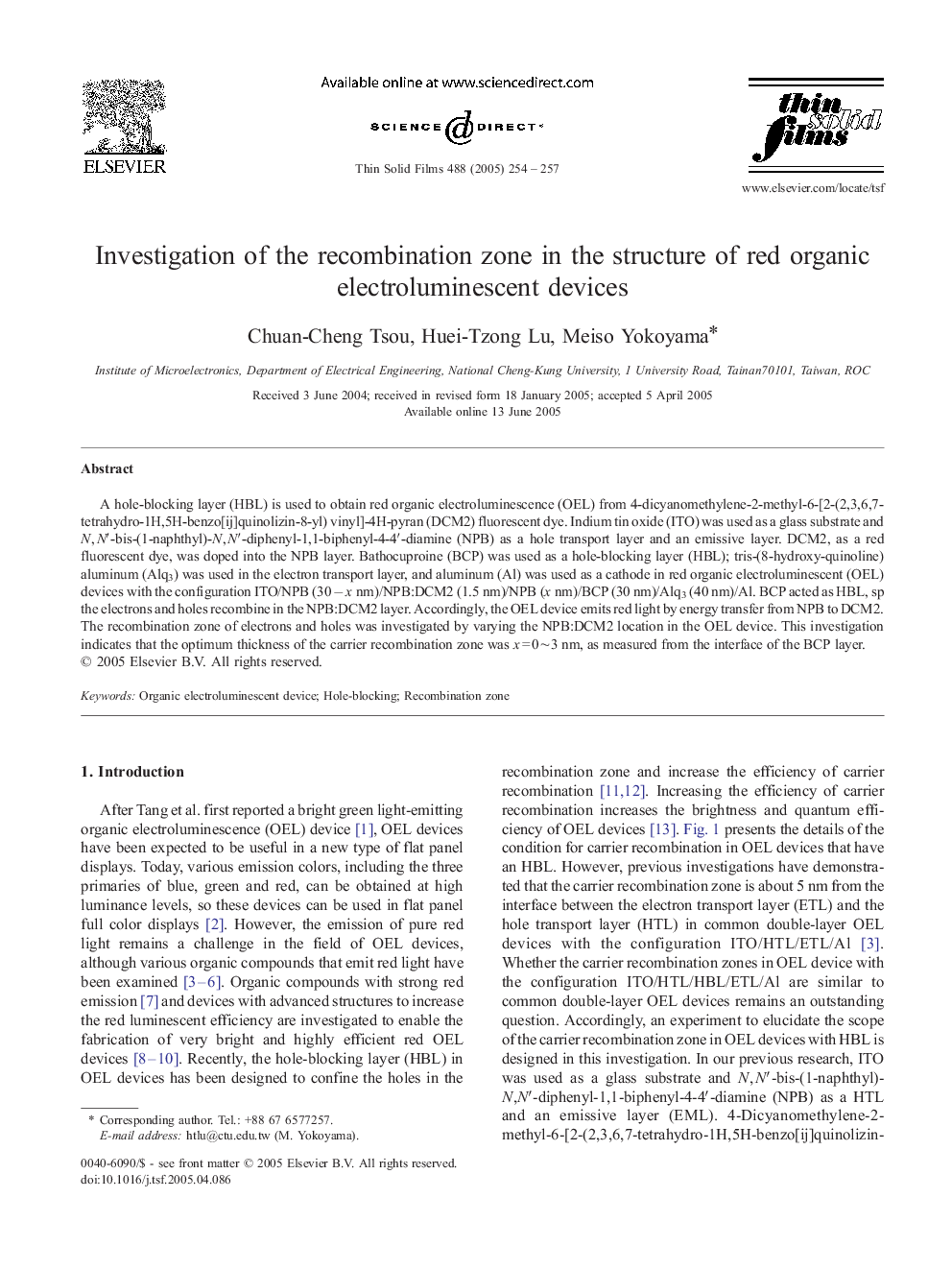| کد مقاله | کد نشریه | سال انتشار | مقاله انگلیسی | نسخه تمام متن |
|---|---|---|---|---|
| 9812338 | 1518111 | 2005 | 4 صفحه PDF | دانلود رایگان |
عنوان انگلیسی مقاله ISI
Investigation of the recombination zone in the structure of red organic electroluminescent devices
دانلود مقاله + سفارش ترجمه
دانلود مقاله ISI انگلیسی
رایگان برای ایرانیان
کلمات کلیدی
موضوعات مرتبط
مهندسی و علوم پایه
مهندسی مواد
فناوری نانو (نانو تکنولوژی)
پیش نمایش صفحه اول مقاله

چکیده انگلیسی
A hole-blocking layer (HBL) is used to obtain red organic electroluminescence (OEL) from 4-dicyanomethylene-2-methyl-6-[2-(2,3,6,7-tetrahydro-1H,5H-benzo[ij]quinolizin-8-yl) vinyl]-4H-pyran (DCM2) fluorescent dye. Indium tin oxide (ITO) was used as a glass substrate and N,Nâ²-bis-(1-naphthyl)-N,Nâ²-diphenyl-1,1-biphenyl-4-4â²-diamine (NPB) as a hole transport layer and an emissive layer. DCM2, as a red fluorescent dye, was doped into the NPB layer. Bathocuproine (BCP) was used as a hole-blocking layer (HBL); tris-(8-hydroxy-quinoline) aluminum (Alq3) was used in the electron transport layer, and aluminum (Al) was used as a cathode in red organic electroluminescent (OEL) devices with the configuration ITO/NPB (30 â x nm)/NPB:DCM2 (1.5 nm)/NPB (x nm)/BCP (30 nm)/Alq3 (40 nm)/Al. BCP acted as HBL, sp the electrons and holes recombine in the NPB:DCM2 layer. Accordingly, the OEL device emits red light by energy transfer from NPB to DCM2. The recombination zone of electrons and holes was investigated by varying the NPB:DCM2 location in the OEL device. This investigation indicates that the optimum thickness of the carrier recombination zone was x = 0â¼3 nm, as measured from the interface of the BCP layer.
ناشر
Database: Elsevier - ScienceDirect (ساینس دایرکت)
Journal: Thin Solid Films - Volume 488, Issues 1â2, 22 September 2005, Pages 254-257
Journal: Thin Solid Films - Volume 488, Issues 1â2, 22 September 2005, Pages 254-257
نویسندگان
Chuan-Cheng Tsou, Huei-Tzong Lu, Meiso Yokoyama,